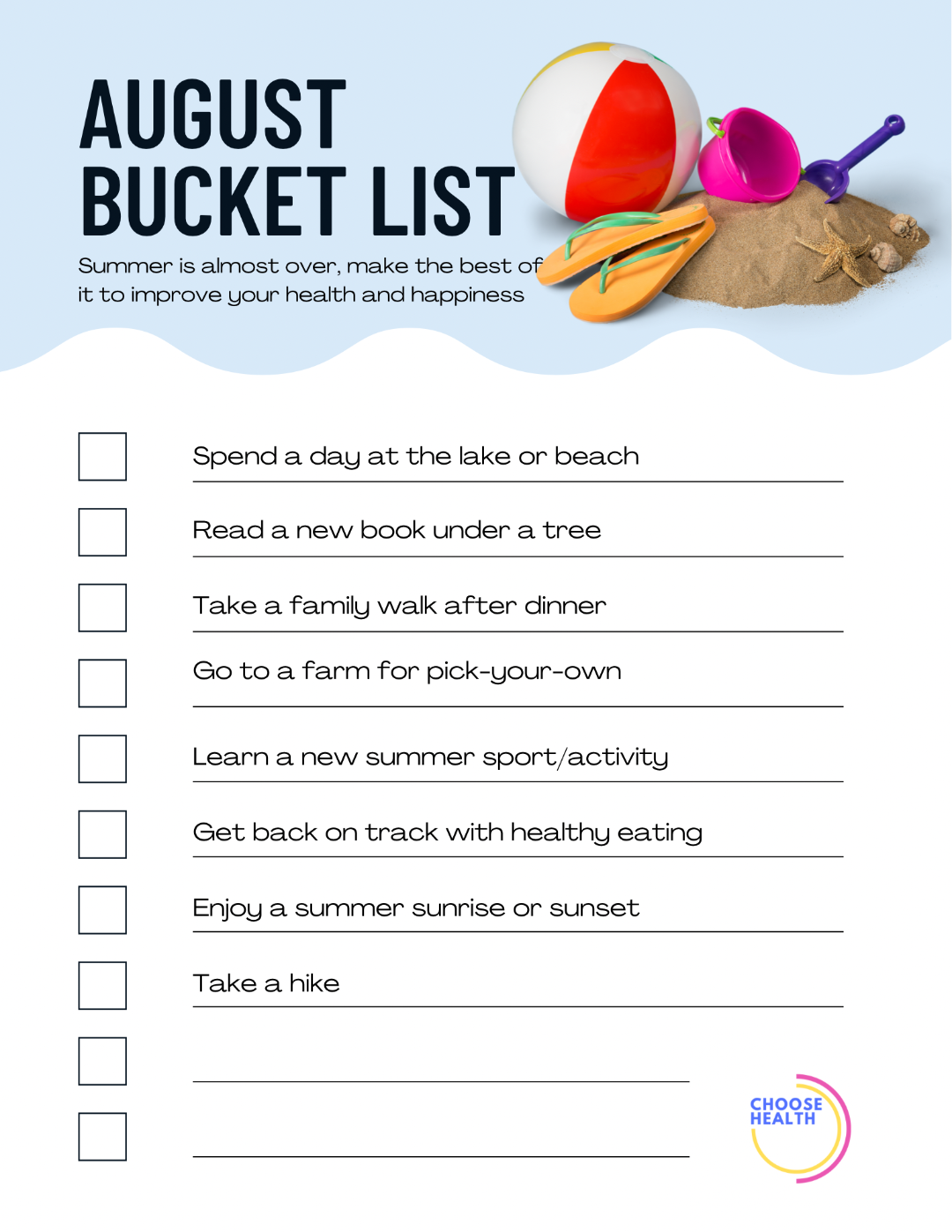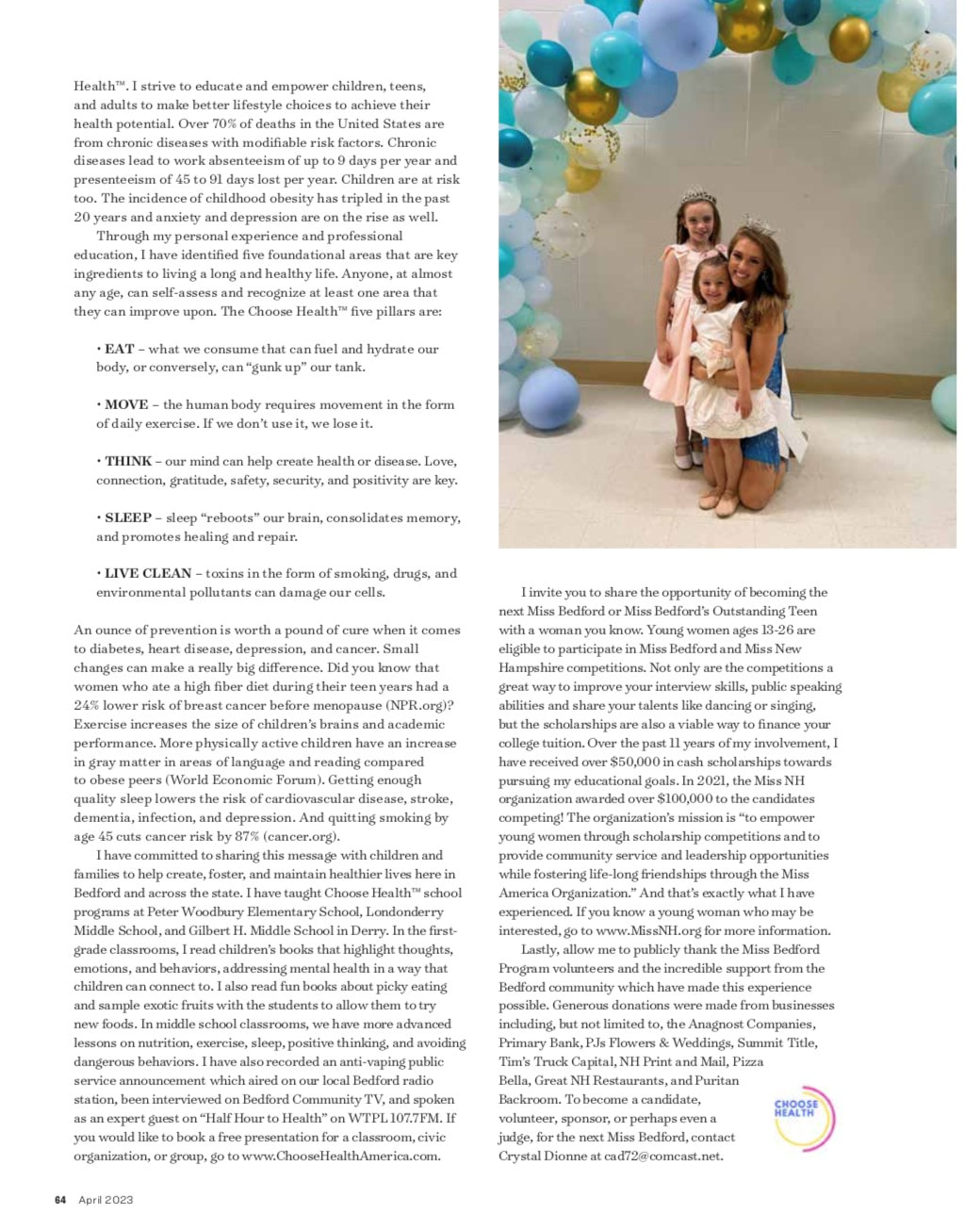|
Lifestyle presentations with teens feel more complicated, as peer pressure rules their food choices, the digital world often robs them of sleep and unkind words affect their self-esteem. The most common questions from my teen classrooms involve how students can become more confident and happier in their own skin. Shockingly, according to the CDC, nearly one in three teen girls has seriously considered attempting suicide. This is nearly a 60 percent increase over ten years ago. There is no doubt a need for more health programming in schools, with an emphasis on mental health, especially for girls. If you are reading this and need mental health support now, call or text 988 or chat 988lifeline.org. The 988 dialing code has been designated by Congress and is operated through the existing National Suicide Prevention Lifeline.
Getting kids to try new foods is one goal of my Choose Health presentations in pre-school and kindergarten classrooms. I love to read "D.W. The Picky Eater" with the class before offering up new foods to sample. Did you know that adults have an average 10,000 taste buds, but as we age we lose up to 50% of them? Tastes become blander in our older years, so it's important to remember that children experience the same foods we are eating differently, especially if it is their first time trying a new food. They will use other senses to taste, including their smell, touch and sight. Today's Choose Health Tip: Do your best to make foods appealing in texture, visual appeal and aroma when trying to introduce a new healthy menu item. It's a bonus if you can involve your kids in food preparation too!
 Looking for a quick and delicious snack that kids of all ages will love? When you choose allergy friendly chocolate chips this recipe is both dairy-free and gluten-free! I recently made this recipe with a girl scout troop as part of my Choose Health Program. They were a huge hit! Brooke was really nice and we learned a lot from her presentation. I learned different colors of foods and how they help your body. By the way, you should definitely ask for her peanut butter ball recipe because they're good and healthy! - A.J.  I teach S.M.A.R.T. goal setting as a facet of THINK POSITIVELY in my Choose Health Program in schools. I use goal setting in my own life to achieve academic goals, as well as personal and professional goals. One of those big, audacious goals is to serve and represent my home state of New Hampshire within the Miss America Program. I began competing at the age of 13 in the teen age division. At the time, I was an accomplished dancer. The following year I suffered a life-changing concussion which left me physically unable to dance. Since a performing arts talent is required to participate in the competition, I was forced to re-evaluate my dream. Was this even possible for me anymore? If I decided not to give up, I would need set new, smaller goals. And that is just what I did. I began singing lessons, then with much trepidation, sang in public, eventually competing again as a vocalist. I have been competing ten years now, and although I haven't reached my big goal, I count my blessings for the journey that has given me opportunities for personal growth, service and new friendships. I am thankful for smaller goals that I have achieved along the way, and for the $50,000 I have earned towards my college education through my participation. (Many people are surprised to hear that Miss America is one of the largest providers of scholarships to women in the country!) Today's thought: Don't be afraid to set goals for yourself, and sometimes fall short. Adapt to challenges. Don't be afraid to try again. And don't ever give up on yourself. Thank you to Greet Bedford Magazine for their April issue story about my participation in the Miss New Hampshire Competition and my Choose Health initiative shared here in images.  Start your morning right with my delicious breakfast smoothie recipe: - Frozen banana (generally use about 3 chunks) - Protein of choice (loving collagen right now because it’s flavorless and has no sugar or fake sugars) - One serving of almond milk - Handful of ice - Shot of espresso (or cold brew concentrate) - Tablespoon of natural organic peanut butter (or one serving of PB2!) Looking for some more nutrients or veggies in your breakfast?? Dice and freeze zucchini or spinach and add a handful before blending! Blend for extra-long to create a sleek, creamy, beautiful breakfast!  In my last blog we talked about the benefits of strength training. The bottom line? It's really good for us, but like anything, it's important to do it correctly. Disclaimer: if you've never weight lifted before, find an experienced friend, coach or personal trainer to help you get started. Proper technique and form are vital. Here are my top eight tips for strength training:
 The CDC recommends that we strength train two or more days per week, using weights or resistance bands, involving all muscle groups. I've been weightlifting since high school, shortly after my concussion freshman year. When vertigo and balance issues lingered for months (then years), Post Concussion Syndrome took away my ability to continue my competitive dance career. I needed to find a new way to exercise that didn't aggravate my on-going concussion symptoms. As the years went by, weightlifting remained a core part of movement strategy through undergraduate and graduate school. As a bonus to helping make my body leaner, it has also been great way for me to deal with the mental stress of being a student. Crazy fact time: Did you know that inactive adults will lose 3-8% of muscle mass per decade? Strength training can boost your long-term health in so many ways:
While we want to work all major muscle groups, it is important not to work any single muscle group two days in a row. Instead, take a day off between that group of muscles. Many people alternate days and will do upper body one day, and lower body the next. If you're new to weightlifting, I encourage you to find a personal trainer for some instruction and supervision to get you started safely, with proper form and technique. Stay tuned for more tips about weightlifting...  Spring is in the air, and it is a great time to get out for walk. And a simple, rather short walk, could change your life! New research from the University of Cambridge reports that one in ten early deaths could be prevented if people exercised for just half the recommended level of daily physical activity. The analysis showed that 75 minutes per week is enough to lower the risk of chronic diseases including heart disease, stroke and cancers. This equates to 11 minutes of brisk walking, dancing, biking or other moderate exercise done daily. Of course, if you exercise more, your benefits are greater. Researchers in this study calculated that if everyone exercised for 150 minutes per week, one in six early deaths could be prevented! Let's go for a walk today :) Read the research here: https://bjsm.bmj.com/content/early/2023/01/23/bjsports-2022-105669 |
AuthorWrite something about yourself. No need to be fancy, just an overview. Archives
December 2023
Categories |





 RSS Feed
RSS Feed